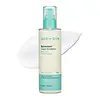What's inside
What's inside
 Key Ingredients
Key Ingredients

 Benefits
Benefits

 Concerns
Concerns

 Ingredients Side-by-side
Ingredients Side-by-side

Water
Skin ConditioningButylene Glycol
HumectantGlycerin
HumectantCaprylic/Capric Triglyceride
MaskingNiacinamide
SmoothingPentylene Glycol
Skin Conditioning1,2-Hexanediol
Skin ConditioningMethyl Glucose Sesquistearate
EmollientSqualane
EmollientHydrogenated Lecithin
EmulsifyingPolyglyceryl-10 Laurate
Skin ConditioningDipropylene Glycol
HumectantAsiaticoside
AntioxidantMadecassic Acid
Skin ConditioningAsiatic Acid
Skin ConditioningCandida Bombicola/Glucose/Methyl Rapeseedate Ferment
AntimicrobialHelianthus Annuus Seed Oil
EmollientEthoxydiglycol
HumectantGlyceryl Stearate
EmollientHydrogenated Poly(C6-14 Olefin)
EmollientJojoba Esters
EmollientCetearyl Alcohol
EmollientPanthenol
Skin ConditioningEthylhexylglycerin
Skin ConditioningHydroxyethyl Acrylate/Sodium Acryloyldimethyl Taurate Copolymer
Emulsion StabilisingCarbomer
Emulsion StabilisingTromethamine
BufferingSodium Hyaluronate
HumectantWater, Butylene Glycol, Glycerin, Caprylic/Capric Triglyceride, Niacinamide, Pentylene Glycol, 1,2-Hexanediol, Methyl Glucose Sesquistearate, Squalane, Hydrogenated Lecithin, Polyglyceryl-10 Laurate, Dipropylene Glycol, Asiaticoside, Madecassic Acid, Asiatic Acid, Candida Bombicola/Glucose/Methyl Rapeseedate Ferment, Helianthus Annuus Seed Oil, Ethoxydiglycol, Glyceryl Stearate, Hydrogenated Poly(C6-14 Olefin), Jojoba Esters, Cetearyl Alcohol, Panthenol, Ethylhexylglycerin, Hydroxyethyl Acrylate/Sodium Acryloyldimethyl Taurate Copolymer, Carbomer, Tromethamine, Sodium Hyaluronate
Water
Skin ConditioningSodium Lauroyl Sarcosinate
CleansingSodium Laureth Sulfate
CleansingGlycerin
HumectantPropylene Glycol
HumectantCentella Asiatica Leaf Extract
Skin ConditioningSodium Hyaluronate
HumectantNiacinamide
SmoothingTriethanolamine
BufferingAcrylates/C10-30 Alkyl Acrylate Crosspolymer
Emulsion StabilisingPPG-1-PEG-9 Lauryl Glycol Ether
EmulsifyingInulin
Skin ConditioningAlpha-Glucan Oligosaccharide
CleansingPhenoxyethanol
PreservativeDisodium EDTA
Citric Acid
BufferingSodium Benzoate
MaskingPotassium Sorbate
PreservativeWater, Sodium Lauroyl Sarcosinate, Sodium Laureth Sulfate, Glycerin, Propylene Glycol, Centella Asiatica Leaf Extract, Sodium Hyaluronate, Niacinamide, Triethanolamine, Acrylates/C10-30 Alkyl Acrylate Crosspolymer, PPG-1-PEG-9 Lauryl Glycol Ether, Inulin, Alpha-Glucan Oligosaccharide, Phenoxyethanol, Disodium EDTA, Citric Acid, Sodium Benzoate, Potassium Sorbate
 Reviews
Reviews

Ingredients Explained
These ingredients are found in both products.
Ingredients higher up in an ingredient list are typically present in a larger amount.
Glycerin is already naturally found in your skin. It helps moisturize and protect your skin.
A study from 2016 found glycerin to be more effective as a humectant than AHAs and hyaluronic acid.
As a humectant, it helps the skin stay hydrated by pulling moisture to your skin. The low molecular weight of glycerin allows it to pull moisture into the deeper layers of your skin.
Hydrated skin improves your skin barrier; Your skin barrier helps protect against irritants and bacteria.
Glycerin has also been found to have antimicrobial and antiviral properties. Due to these properties, glycerin is often used in wound and burn treatments.
In cosmetics, glycerin is usually derived from plants such as soybean or palm. However, it can also be sourced from animals, such as tallow or animal fat.
This ingredient is organic, colorless, odorless, and non-toxic.
Glycerin is the name for this ingredient in American English. British English uses Glycerol/Glycerine.
Learn more about GlycerinNiacinamide is a multitasking form of vitamin B3 that strengthens the skin barrier, reduces pores and dark spots, regulates oil, and improves signs of aging.
And the best part? It's gentle and well-tolerated by most skin types, including sensitive and reactive skin.
You might have heard of "niacin flush", or the reddening of skin that causes itchiness. Niacinamide has not been found to cause this.
In very rare cases, some individuals may not be able to tolerate niacinamide at all or experience an allergic reaction to it.
If you are experiencing flaking, irritation, and dryness with this ingredient, be sure to double check all your products as this ingredient can be found in all categories of skincare.
When incorporating niacinamide into your routine, look out for concentration amounts. Typically, 5% niacinamide provides benefits such as fading dark spots. However, if you have sensitive skin, it is better to begin with a smaller concentration.
When you apply niacinamide to your skin, your body converts it into nicotinamide adenine dinucleotide (NAD). NAD is an essential coenzyme that is already found in your cells as "fuel" and powers countless biological processes.
In your skin, NAD helps repair cell damage, produce new healthy cells, support collagen production, strengthen the skin barrier, and fight environmental stressors (like UV and pollution).
Our natural NAD levels start to decline with age, leading to slower skin repair, visible aging, and a weaker skin barrier. By providing your skin niacinamide, you're recharging your skin's NAD levels. This leads to stronger, healthier, and younger looking skin.
Another name for vitamin B3 is nicotinamide. This vitamin is water-soluble and our bodies don't store it. We obtain Vitamin B3 from either food or skincare. Meat, fish, wheat, yeast, and leafy greens contain vitamin B3.
The type of niacinamide used in skincare is synthetically created.
Learn more about NiacinamideSodium Hyaluronate is hyaluronic acid's salt form. It is commonly derived from the sodium salt of hyaluronic acid.
Like hyaluronic acid, it is great at holding water and acts as a humectant. This makes it a great skin hydrating ingredient.
Sodium Hyaluronate is naturally occurring in our bodies and is mostly found in eye fluid and joints.
These are some other common types of Hyaluronic Acid:
Learn more about Sodium HyaluronateWater. It's the most common cosmetic ingredient of all. You'll usually see it at the top of ingredient lists, meaning that it makes up the largest part of the product.
So why is it so popular? Water most often acts as a solvent - this means that it helps dissolve other ingredients into the formulation.
You'll also recognize water as that liquid we all need to stay alive. If you see this, drink a glass of water. Stay hydrated!
Learn more about Water